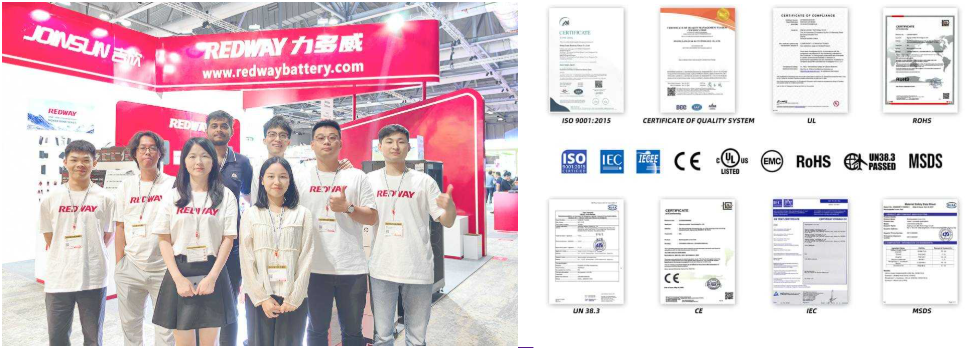LiFePO4 rack-mounted batteries are widely used in applications requiring reliable, efficient, and uninterrupted power supply, such as data centers, telecommunications, renewable energy systems, and industrial automation. Their high energy density and long cycle life make them ideal for critical operations that demand consistent performance.
What Are Rack-Mounted LiFePO4 Batteries?
Rack-mounted LiFePO4 batteries are lithium iron phosphate batteries designed to fit into standard 19-inch racks, commonly used in data centers and telecommunications. Their compact design allows for efficient space utilization while providing reliable power storage and backup solutions across various applications.
| Feature | Description |
|---|---|
| Compact Design | Fits into standard rack systems |
| High Energy Density | Stores significant energy in a small footprint |
| Long Lifespan | Typically lasts over 10 years |
What Are the Key Advantages of Using LiFePO4 Batteries?
Key advantages of LiFePO4 batteries include longer lifespan (up to 3,000-5,000 cycles), high energy density, rapid charging capabilities, and enhanced safety features. They are also environmentally friendly, non-toxic, and require minimal maintenance compared to traditional lead-acid batteries, making them a cost-effective choice for energy storage.
Wholesale lithium golf cart batteries with 10-year life? Check here.
| Advantage | Description |
|---|---|
| Safety | Lower risk of thermal runaway |
| Longevity | Capable of thousands of charge cycles |
| Low Maintenance | Minimal upkeep compared to lead-acid batteries |
How Do Rack-Mounted LiFePO4 Batteries Enhance Energy Efficiency?
Rack-mounted LiFePO4 batteries enhance energy efficiency by maximizing space utilization and allowing for modular expansion. Their high energy density means more power can be stored in a smaller footprint. Additionally, they support fast charging and discharging, ensuring quick availability of stored energy when needed.
| Metric | Description |
|---|---|
| Charge Rate | Fast charging capabilities |
| Discharge Rate | High efficiency during power delivery |
What Are Typical Applications for Rack-Mounted LiFePO4 Batteries?
Typical applications for rack-mounted LiFePO4 batteries include data centers, telecommunications, renewable energy storage systems, backup power supplies, and electric vehicles. Their reliability and efficiency make them suitable for critical infrastructure requiring consistent power availability and performance.
Want OEM lithium forklift batteries at wholesale prices? Check here.
Typical applications include:
- Data Centers: Providing backup power during outages to prevent data loss.
- Telecommunications: Ensuring uninterrupted communication services.
- Renewable Energy Systems: Storing excess energy from solar or wind installations.
- Industrial Automation: Supporting machinery that requires reliable power sources.
Chart: Application Areas
| Application Area | Description |
|---|---|
| Data Centers | Backup power for servers |
| Telecommunications | Power supply for network infrastructure |
| Renewable Energy | Storage solutions for solar/wind energy |
| Industrial Automation | Reliable power for manufacturing processes |
Which Industries Benefit from Rack-Mounted LiFePO4 Solutions?
Industries benefiting from rack-mounted LiFePO4 solutions include telecommunications, data centers, renewable energy, automotive, and emergency services. These industries require reliable power storage solutions that can handle high energy demands while maximizing space and ensuring safety.
How Does Space Efficiency Impact Battery Storage Solutions?
Space efficiency impacts battery storage solutions by allowing for more compact installations that maximize available floor space. This is particularly important in urban environments or facilities with limited room. Efficient use of vertical space through rack mounting enables higher energy capacity without requiring extensive physical footprints.
| Configuration Type | Space Requirement |
|---|---|
| Rack-Mounted | Minimal due to vertical design |
| Traditional | Larger footprint required |
How Do LiFePO4 Batteries Support Renewable Energy Integration?
LiFePO4 batteries support renewable energy integration by providing efficient energy storage for solar and wind systems. Their ability to quickly charge and discharge makes them ideal for balancing supply and demand, storing excess energy generated during peak production times for later use.
What Maintenance Practices Are Recommended for LiFePO4 Batteries?
Recommended maintenance practices for LiFePO4 batteries include regular inspections of connections and terminals for corrosion, monitoring state of charge (SoC) and state of health (SoH), ensuring proper ventilation, and following manufacturer guidelines for charging cycles. Keeping detailed records of performance can help identify potential issues early.
Expert Views
“LiFePO4 rack-mounted batteries represent a transformative shift in how we approach energy storage solutions,” states an expert from Redway. “Their reliability and efficiency are critical in supporting modern infrastructure demands.”
Conclusion
LiFePO4 rack-mounted batteries are essential components in various applications requiring dependable power supply systems. Their advantages—such as high energy density, long lifespan, and minimal maintenance—make them suitable for data centers, telecommunications, renewable energy systems, and more.
Frequently Asked Questions
- What are rack-mounted LiFePO4 batteries?
Rack-mounted LiFePO4 batteries are compact battery systems designed to fit into standard racks used primarily in data centers and telecom environments. - What are the typical applications for these batteries?
They are commonly used in data centers, telecommunications networks, renewable energy systems, and industrial automation processes. - What maintenance is required for rack-mounted LiFePO4 batteries?
Regular inspections, monitoring charge levels, ensuring adequate ventilation, and cleaning terminals are recommended maintenance practices.





